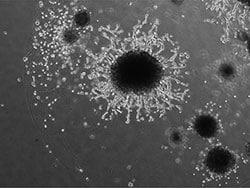Mini-placentas grown in the lab have helped to identify proteins that facilitate placental invasion of the uterus and the opening of its arteries in order to supply nutrients to the developing fetus. The insights could help shed light on what happens during pre-eclampsia.
Led by Professor Ashley Moffett at the University of Cambridge, the study was published in Cell Stem Cell , and improves understanding of the intricate interactions between the placenta and the uterus.
Difficult Phase to Study
Most major pregnancy disorders, including pre-eclampsia, are challenging to study due to their roots in the early stages of placental development. During this phase, human trophoblast cells, originating from the trophectoderm around the blastocyst, differentiate into cytotrophoblast cells and extravillous trophoblast cells (EVTs). Cytotrophoblast cells facilitate nutrient exchange with maternal blood. EVTs invade the maternal decidual stroma, differentiating into interstitial EVTs, which help ensure sufficient blood supply to the developing foetus.

Disruptions in this process can lead to disordered blood flow, placental damage, and foetal growth restriction, contributing to pregnancy complications like pre-eclampsia, stillbirth, and recurrent miscarriage.
The team’s innovative use of trophoblast organoids, a cellular model of the early stages of the placenta, provides a platform to actively experiment on the developing human placenta rather than relying solely on observational studies. These mini-placentas closely replicate the early stages of placental development, allowing researchers to delve into the complex processes that occur during the implantation of the placenta into the endometrium.
Previous work by the team had highlighted the role of uterine natural killer cells in mediating interactions between placental cells and the endometrium.
In the current study, the researchers from the Friedrich Miescher Institute, Switzerland, and the Wellcome Sanger Institute, Cambridge, found that applying a cocktail of uterine natural killer cell cytokines to the trophoblast organoids enhanced their differentiation into EVTs.
Clues to Pre-eclampsia and Other Complications
Pre-eclampsia has an incidence rate of approximately six in 100 first pregnancies and is of significant concern due to its potential risks to both mother and baby. The mini-placentas provide a unique opportunity to investigate and predict pre-eclampsia, offering valuable insights that could contribute to preventive measures.
The laboratory organoids also open the door to studying other major disorders of pregnancy.
The study was supported by Wellcome, the Royal Society, European Research Council, and the Medical Research Council.

